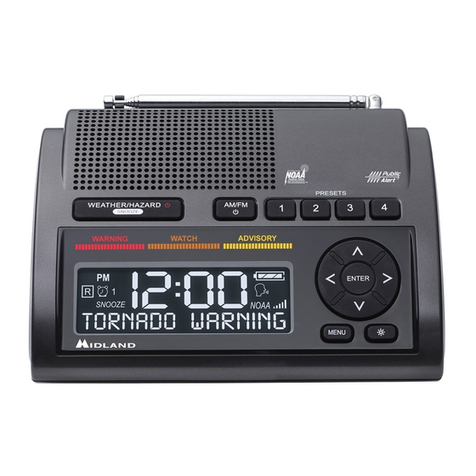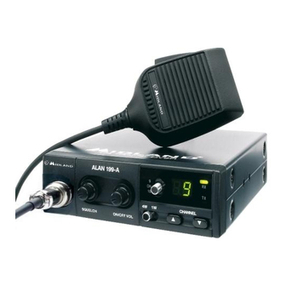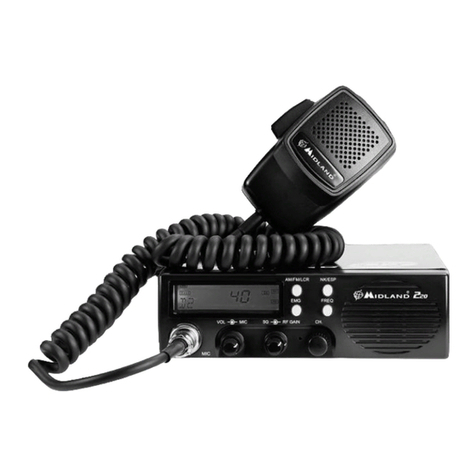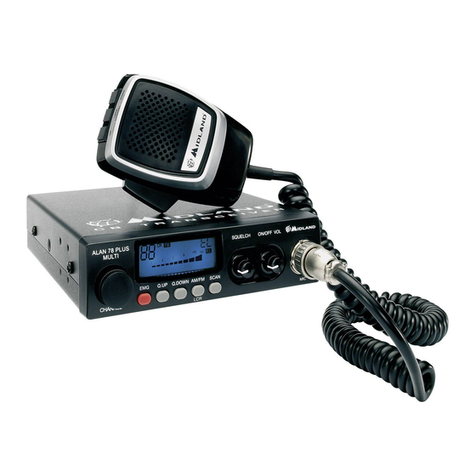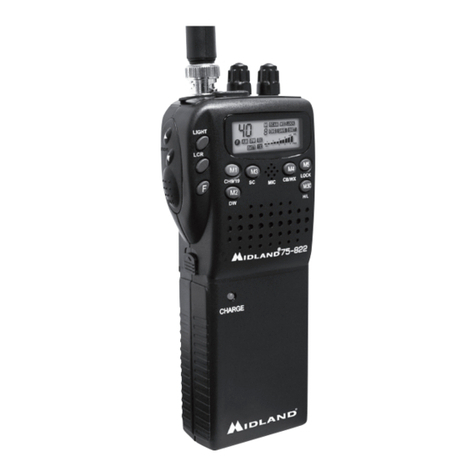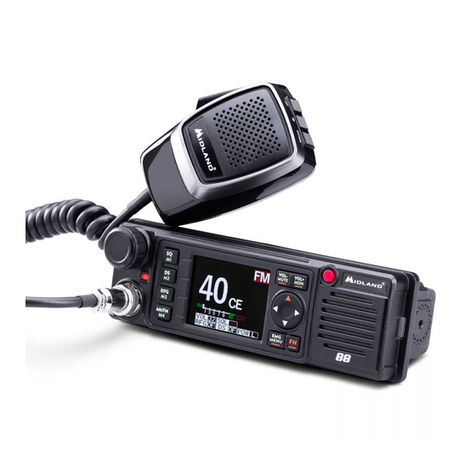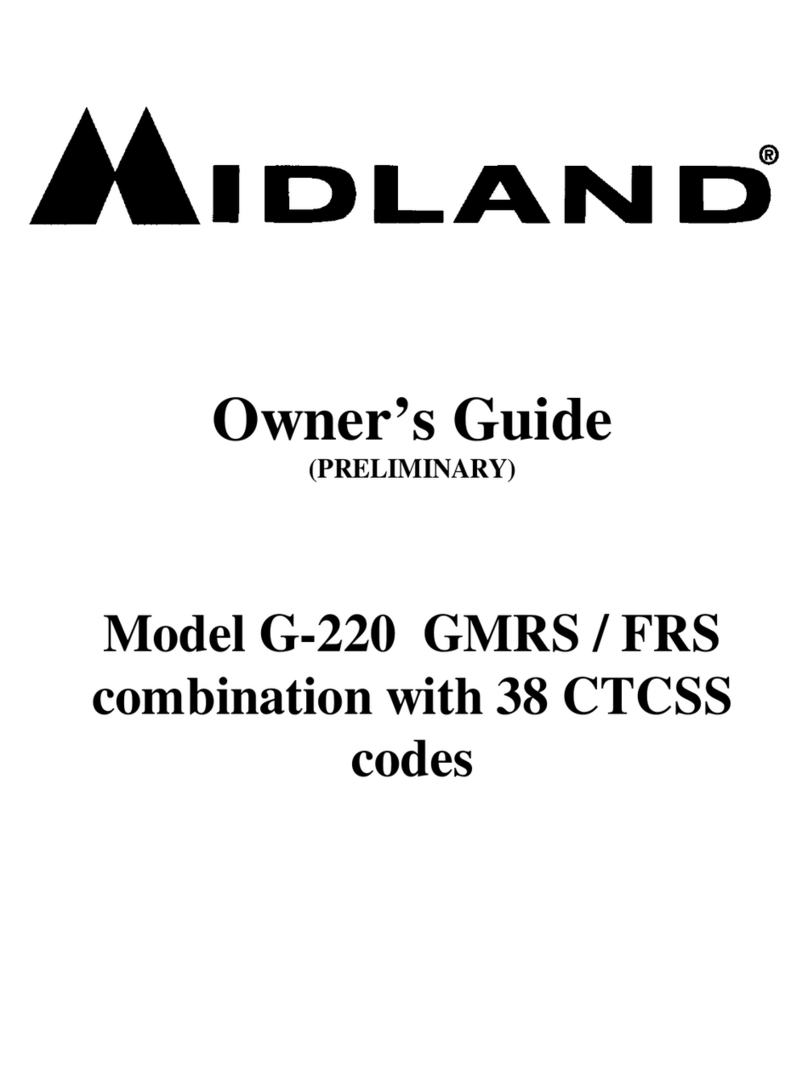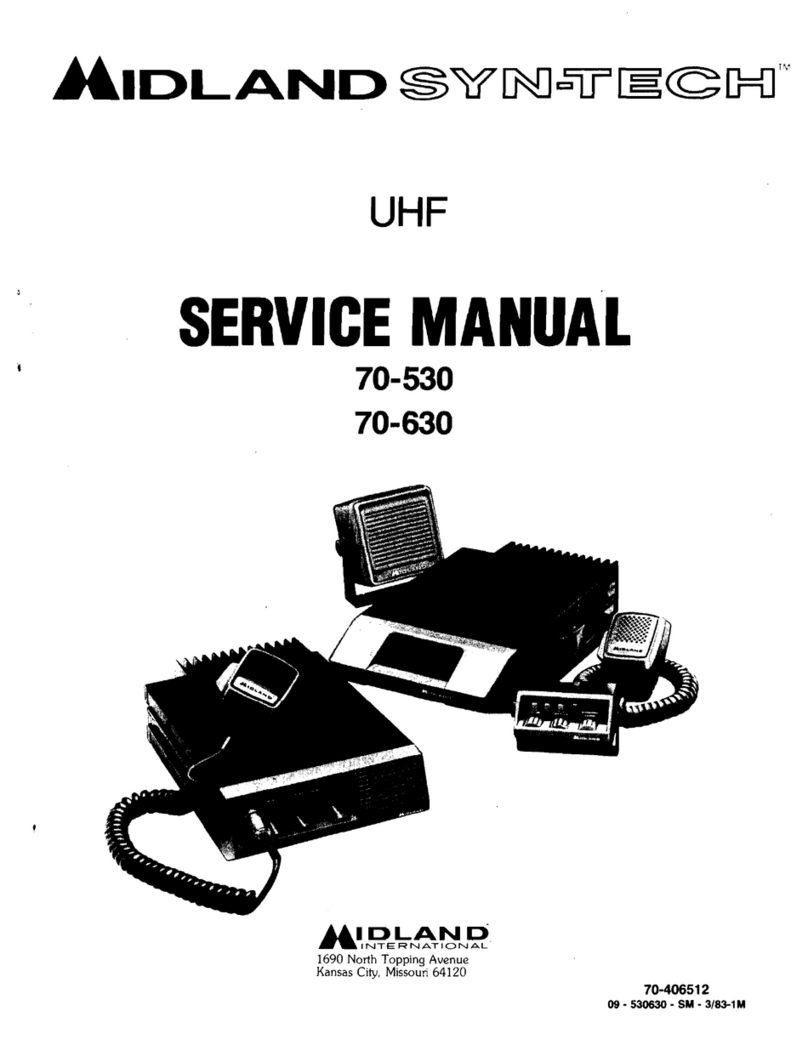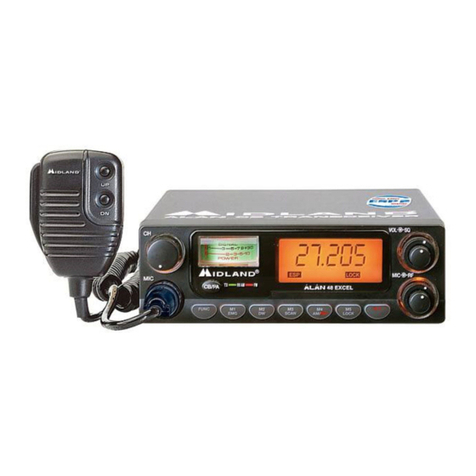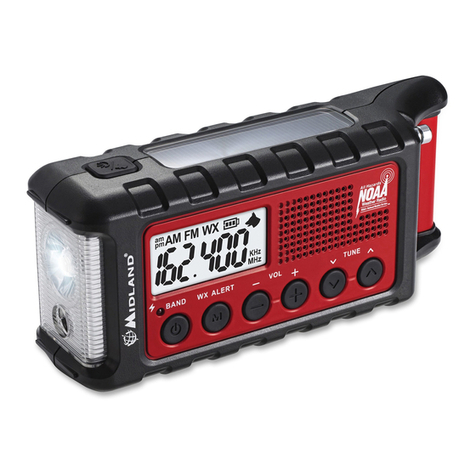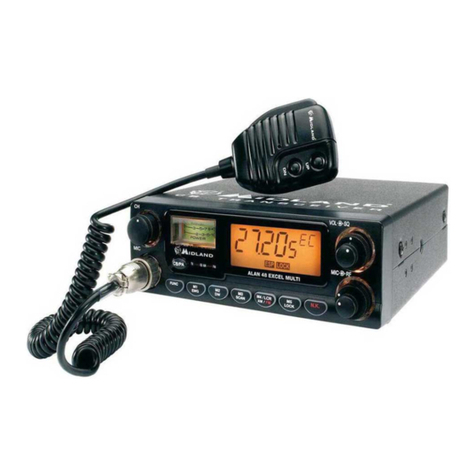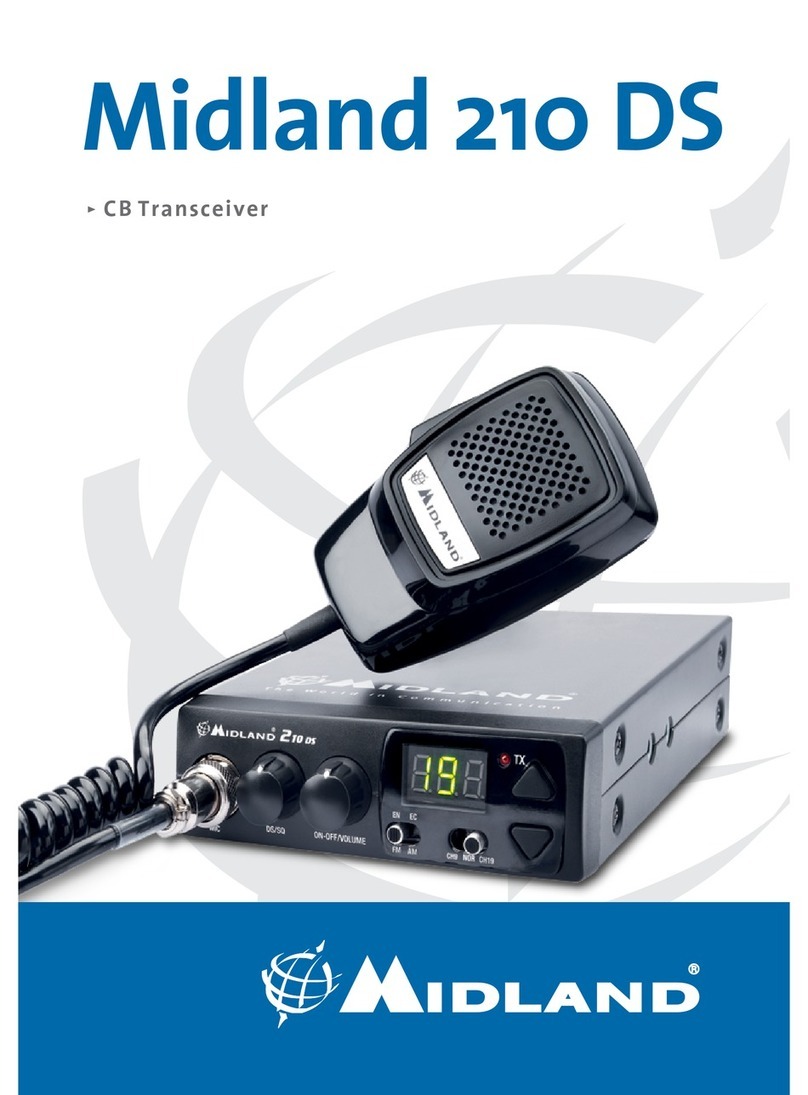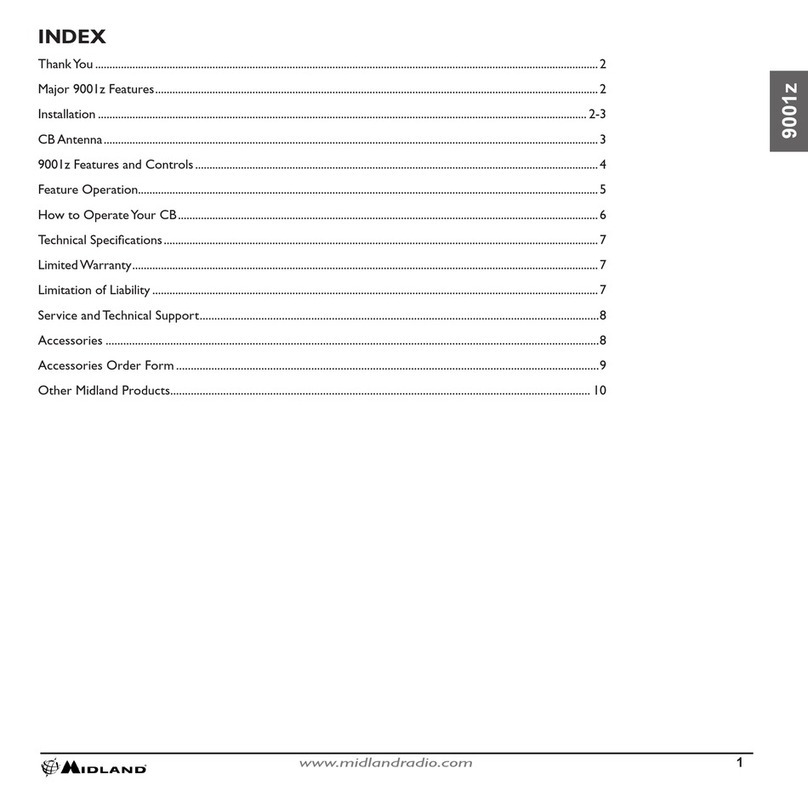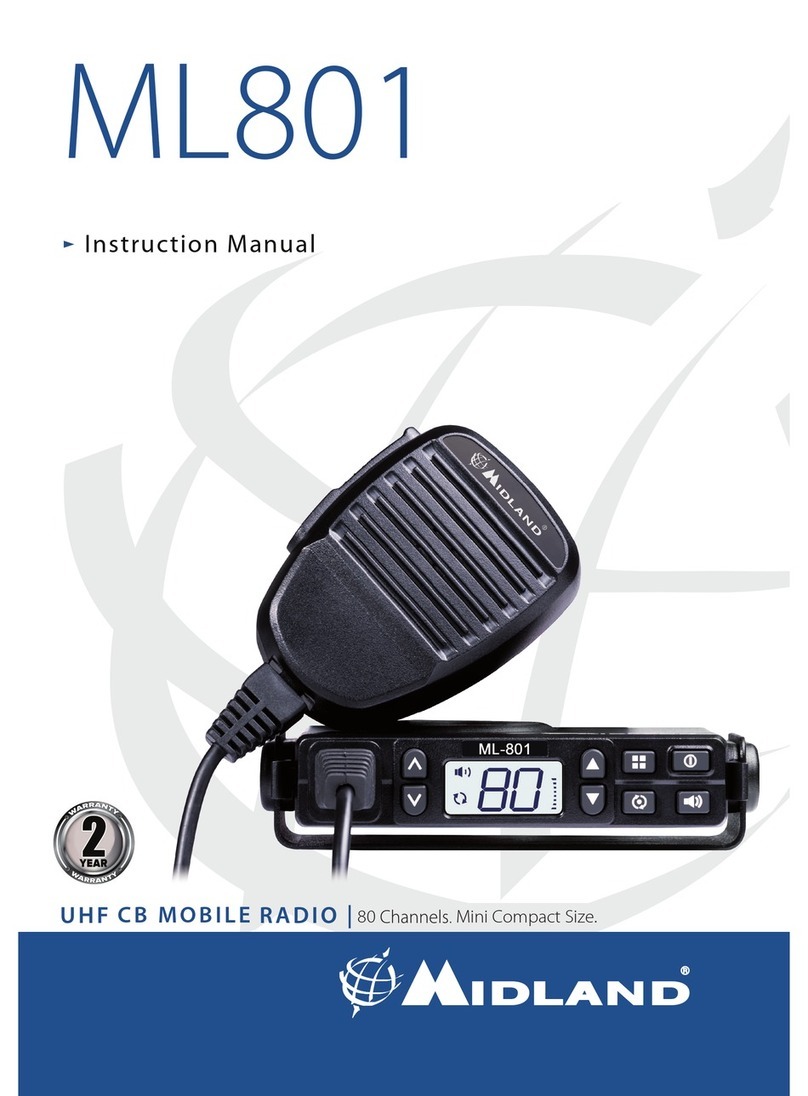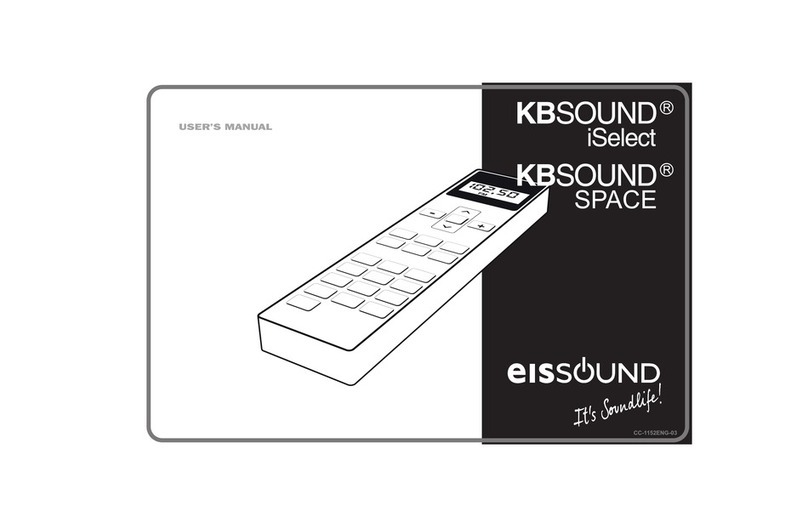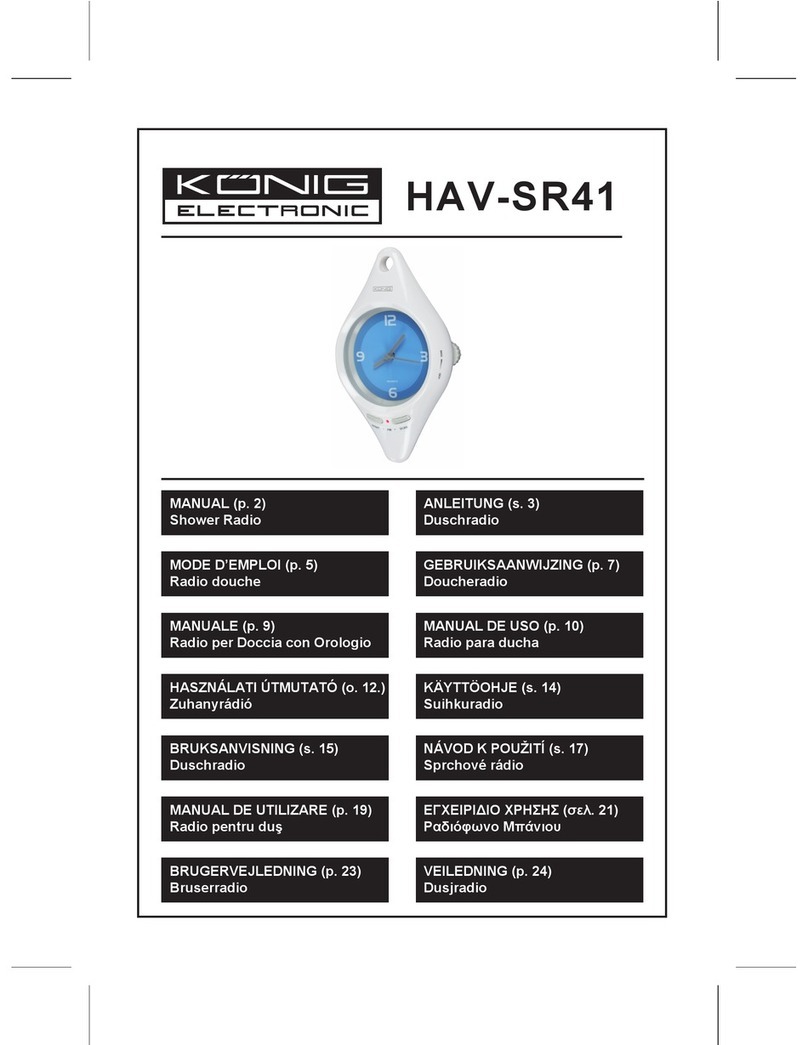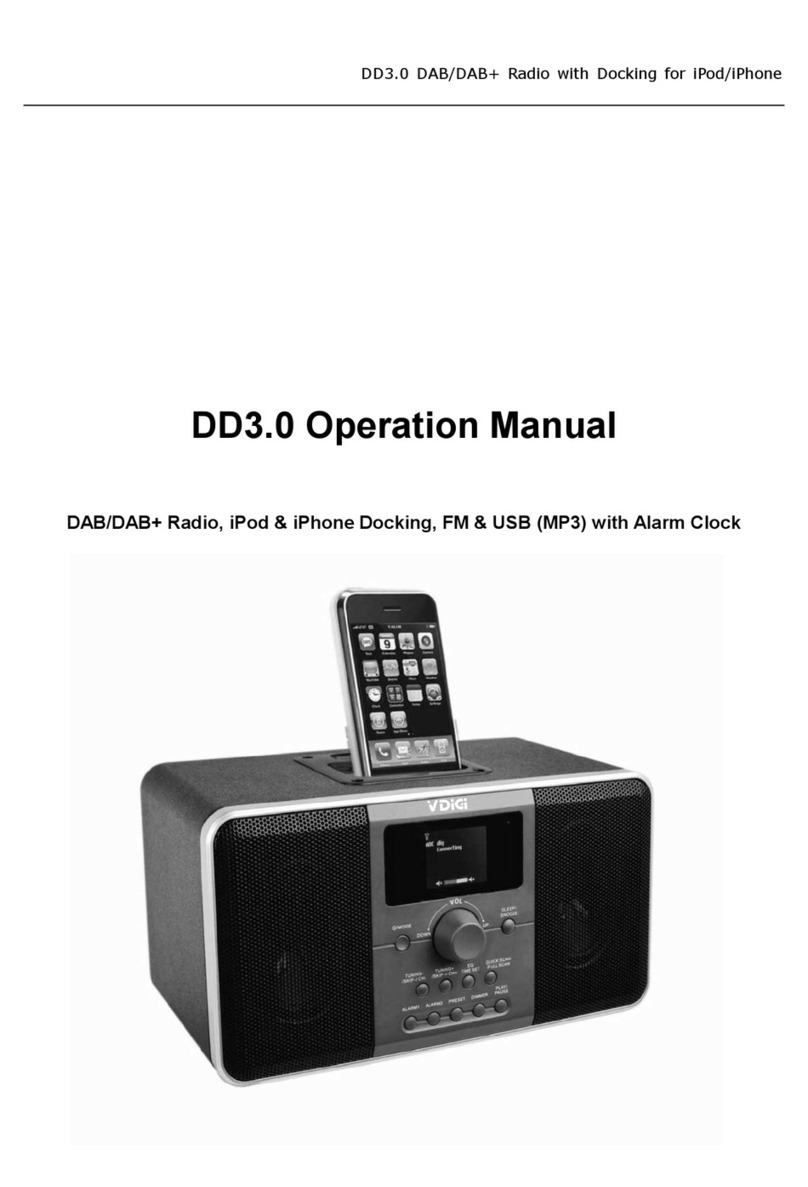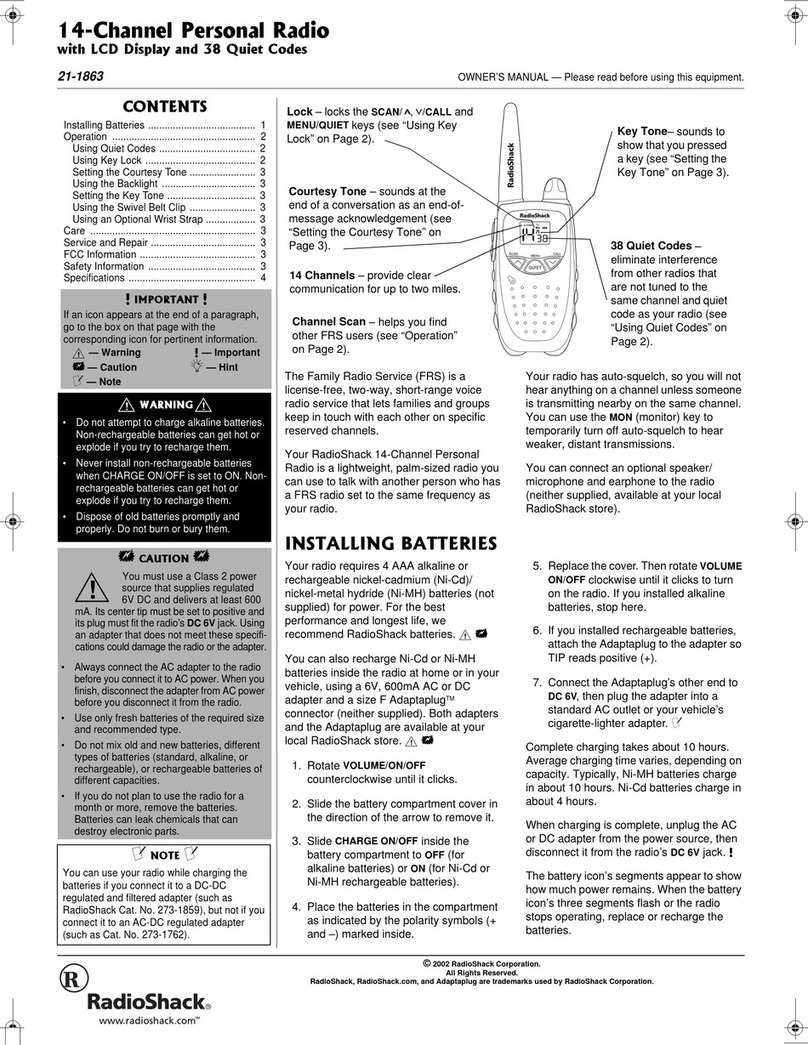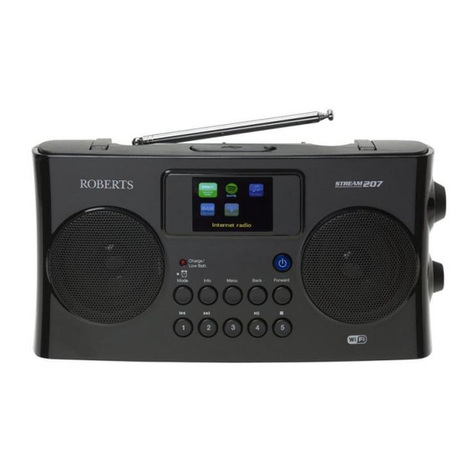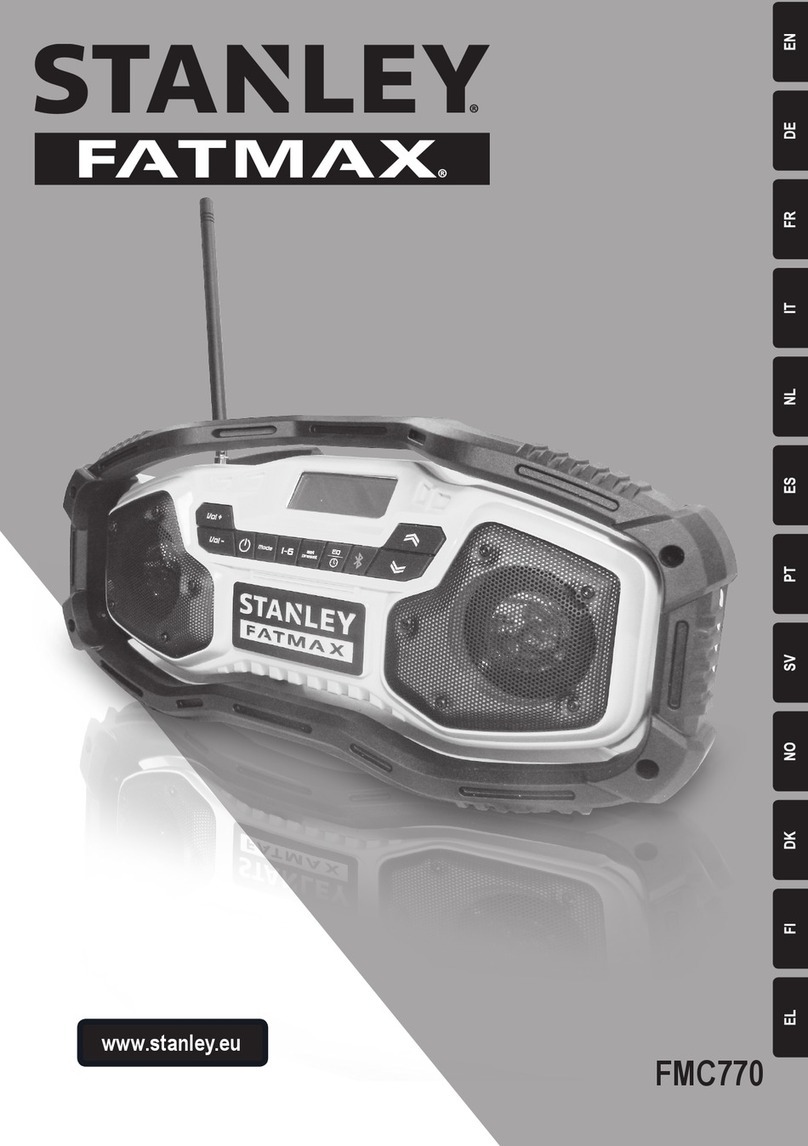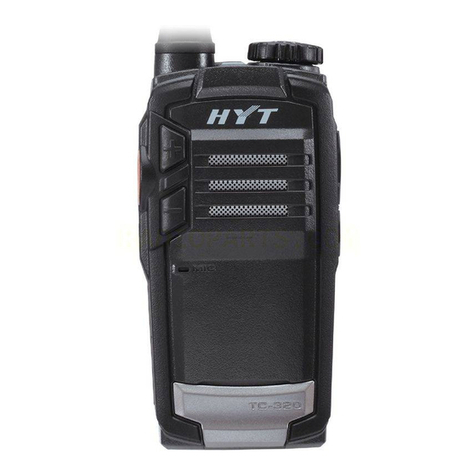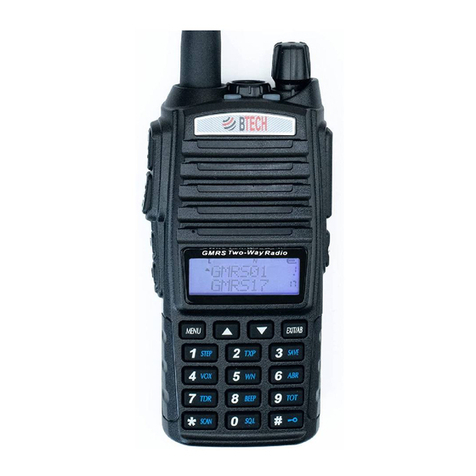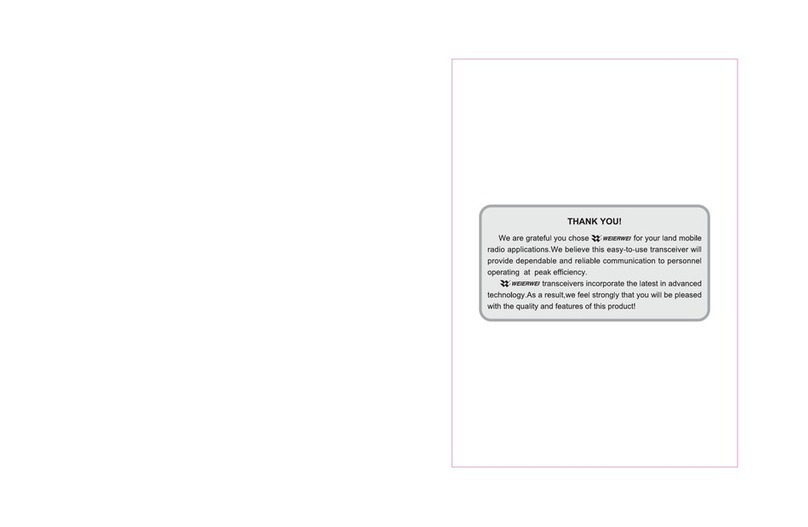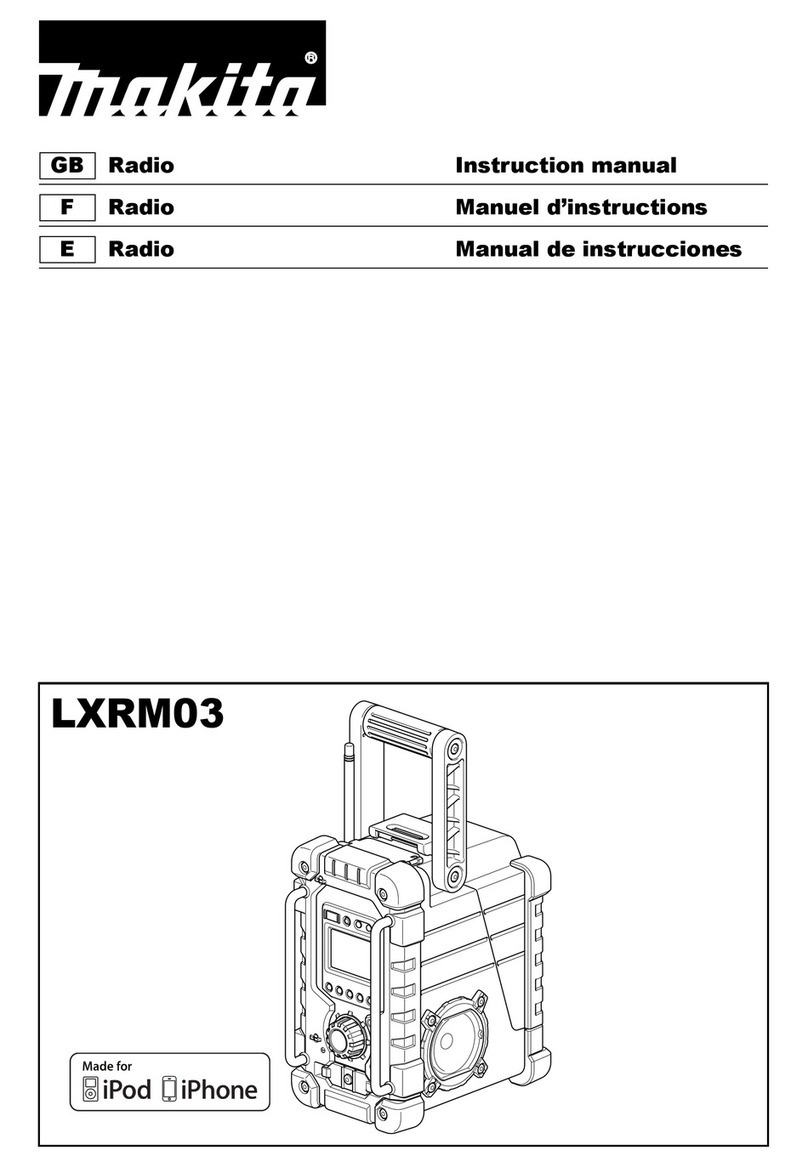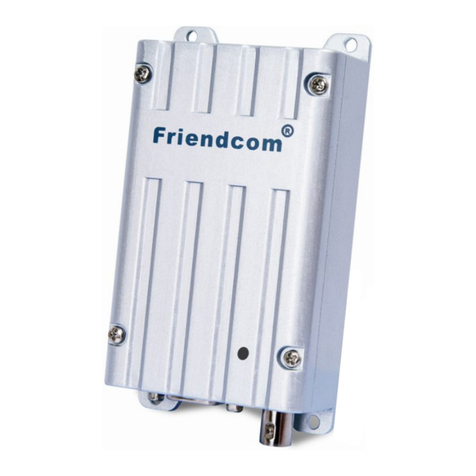BR01 instruction guide | 7
Squelch
The Squelch function suppresses noises on the channel in use and allows to receive
even weak signals.
BR01 has 10 dierent Squelch levels that can be set by programming software: 0
means that the Squelch is turned o; from level 1 to level 9 you will have dierent
levels of noise reduction. The higher is the level, the louder will be the Squelch.
By default, the Squelch level of BR01 is set on level 4.
Make sure you do not set an excessively high squelch level because in this case you may
not be able to receive weaker signals. On the other hand an excessively low Squelch value
could enable the Squelch even when no signals are present.
Squelch must always be adjusted when no signals are present.
CTCSS/DCS tones
CTCSS and DCS tones are similar to access codes and enable the radio to commu-
nicate only with the users that are tuned on the same channel and have set the same
code. For each channel, you can set up to 50 CTCSS tones and 232 DCS codes.
The CTCSS/DCS tones are a sort of “access codes” and enable the radio to com-
municate only with the other users set on the same frequency and on the same
CTCSS/DCS tone. Undesired signals coming from other stations set on the same
frequency but with dierent CTCSS/DCS tones won’t be received.
Flashlight
With BR01 turned on, shortly press the Power on button to turn on/o the flashlight
at the top side of the radio.
Battery recharge
BR01 is equipped for using a 3,7V Li-ion rechargeable battery pack which can be
recharged by connecting the USB cable to the radio and to a USB-charger (5V-
1A). It takes 10 hours to fully recharge the radio.
For maximum battery life, we recommend charging the battery pack when the
BR01 is o and the battery pack is fully discharged.
The Battery power saving feature enables a reduction in consumption of up to 50%.
If it has been set, it automatically activates when the transceiver does not receive
any signal for more than 5 seconds in order to save the battery life.
The Power saving function is activated by default and can be modified only by soft-
ware.

